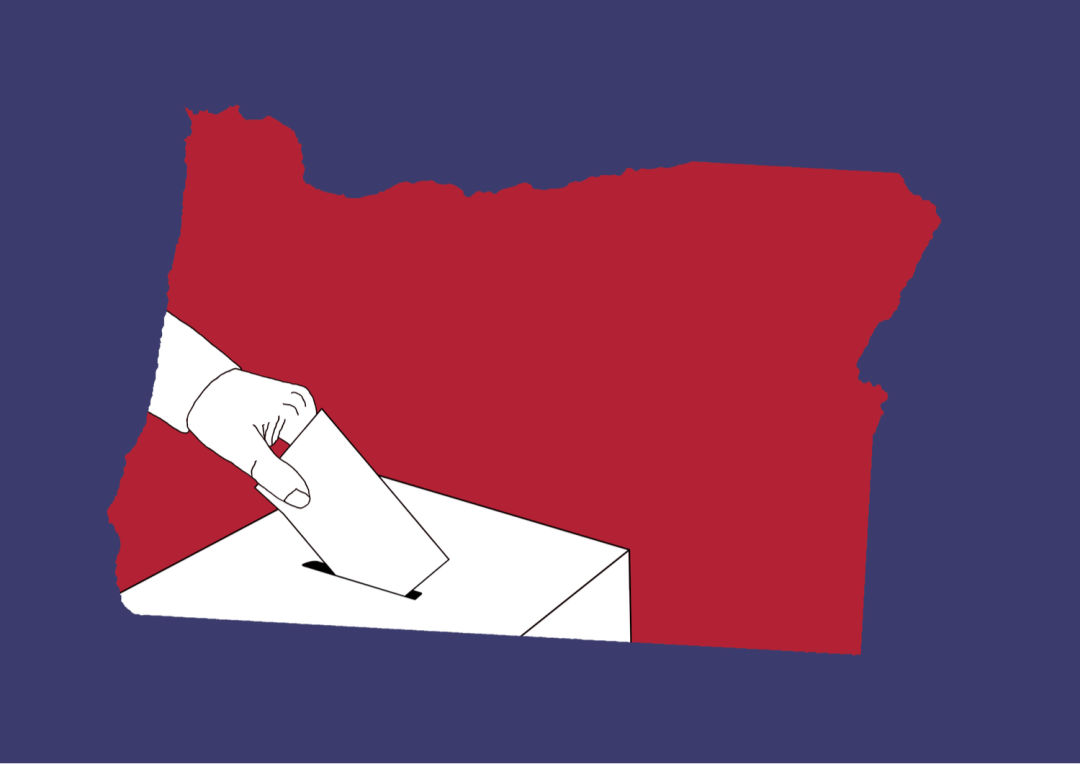The Votes Are In—Now Let's Obsessively Analyze the Results!

You remembered to vote, right?
Image: Courtesy Shutterstock/FJZEA
Now that most of us—looking at you, outlier Mitch McConnell—have processed that Joe Biden will be the 46th president of the United States and votes are just about done being tallied (except for Alaska, Nevada, Georgia, and North Carolina, that is)—we can finally say it: In Oregon, this year’s election was one for the history books.
Pollsters and statisticians will be poring over the results for months, to try and pinpoint trends that will be useful in 2022 and beyond, but already, some clear patterns are emerging: At least when it comes to federal politics, the Oregon Coast is trending red, the Portland suburbs and Bend are continuing their evolution from purple to blue and pretty much everyone liked Joe Biden more than they liked Hillary Clinton in ’16. To the numbers!
My quick, hand entered, look at how Biden performed relative to Clinton in Oregon. He is outpacing Clinton in every county, with the largest gains in Clackamas, Deschutes, Washington, Marion and Benton counties. pic.twitter.com/NTap8Mo0zn
— John Horvick (@horvick) November 4, 2020
Seventy-three percent of eligible voters in Oregon cast ballots this year. That’s pretty good, but still well behind national leaders Minnesota, where nearly 80 percent of eligible voters came out. (We did beat Washington state though, where 72 percent of eligible voters came out. Nyah, nyah, nyah!)
Surprising exactly no one, Multnomah County was the state’s most liberal by far, with 79.2 percent of voters (or about 363,405 at last count) voting for Biden, and only 17.8 percent for Trump, per the Oregon Secretary of State's office. (The rest of the votes went to assorted Libertarian, Green, and other third-party candidates. Kanye West didn’t make it on the ballot here, but he could have gotten some of the county’s 3,485 write-in votes, we suppose.)
As for the state’s most conservative county? Lots of competition, but according to the Secretary of State’s office, that honor belongs to remote Lake County, whose 4,237 voters broke almost 80/20 for the Republican ticket.
Back in the 2000s, prevalent political wisdom had it that federal elections in Oregon were won and lost in the populous and prosperous Portland suburbs. (Recall that Al Gore only won the state by a total of 6,765 votes back in 2000—well below the current Biden/Trump splits in Georgia and Arizona.)
Twenty years later, it’s safe to say that Clackamas and Washington Counties have swung decisively Democratic, particularly in Washington County, where Biden got 65 percent of the vote; in Clackamas County, the president-elect garnered 54 percent of the vote. It’s also worth noting that even though Biden lost handily in rural Oregon, he improved on Hillary Clinton’s 2016 percentages in every county in the state, eating away at Trump’s margins in rural counties.
As a bonus for Democrats, Deschutes County, home to Bend and many a California transplant, flipped from red to blue this year.
So what are Oregon’s new battleground counties? Look for gubernatorial candidates to spend some time in the Marion-Polk-Yamhill County portion of the Willamette Valley in 2022, where voters were very closely split between the two major parties. (Need proof? Trump won Polk County by just 828 votes; Biden took Marion County by 1,245 votes.)
One more statistic, before we let it go: Oregon’s favorite bellwether county is no more. Tillamook County, which has voted with the winner of the national election since 1992, went for Trump this year. That ends their reign (all hail our new Ouija Board champion, Clallam County, Washington), no matter what McConnell says.




